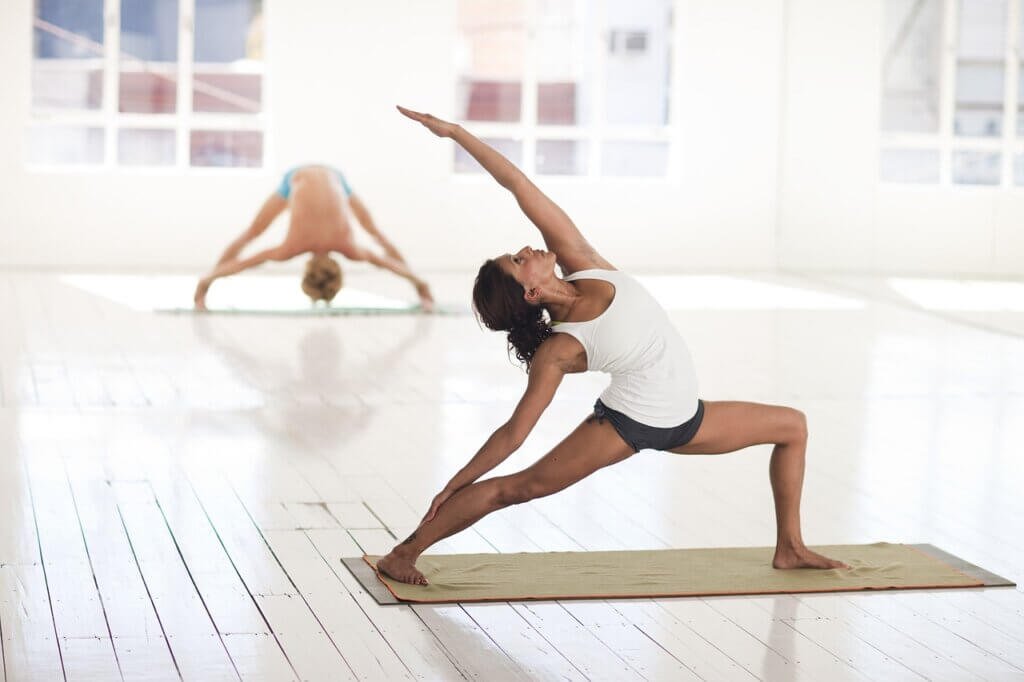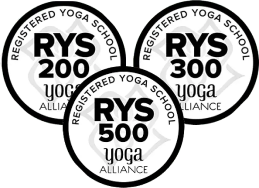Ashtanga yoga is often referred to as one of the most popular forms of modern yoga. Even if you are new to Ashtanga yoga and have just recently started on this journey, you may have experienced it at some point in your life. Many physical, psychological, and mental health benefits of Ashtanga yoga have been shown to improve one’s overall quality of life. In this article, we are going to discuss the benefits of Ashtanga yoga, so, let us get started.
Table of Contents
ToggleWhat Is Ashtanga Yoga?
With Ashtanga yoga, the main focus is on the transition from one pose to the next. You must perform the same yoga positions for the same number of breath counts while following the same pattern.
While Ashtanga yoga differs from other types of yoga in that it requires a high level of discipline and restricted flexibility, other yoga styles like Vinyasa and power yoga also focus on the flow of yoga asanas. Discipline helps in mental and emotional stability.
The Sanskrit terms “Ashta” and “Anga” combine to form the word “ashtanga.” “Anga” means limb or body component, and “Ashta” is the number eight. Ashtanga, then, is the combination of the eight branches of yoga into a single comprehensive structure. The Ashtanga Yoga School’s basis is built around the eight limbs of yoga, which stand for the many schools of the yoga sutra philosophy. Asana (posture), Pranayama (breath control), Pratyahara (sense withdrawal), Dharana (concentration), Dhyana (meditation), and Samadhi (oneness with the self) are the eight limbs of yoga that are integrated in the Ashtanga philosophy.
Ashtanga is a highly athletic and energetic style of hatha yoga consisting of six series or levels and a set sequence of poses. The basic principle is vinyasa, which focuses on breath and energy while changing between poses. Despite being primarily a physical activity, it also promotes peace of mind and mental clarity.
Benefits of Ashtanga Yoga
Ashtanga yoga requires patience and discipline, so it might be a little difficult for beginners. Despite this, Ashtanga yoga is becoming more and more well-liked because of its many benefits. The benefits of Ashtanga yoga are discussed below:
Improves Mind Peace
Drishti, flowing breath patterns, and controlled movements are all part of Ashtanga yoga sequences. The combined effect of all these factors will increase your focus, calm your autonomic nervous system, and regulate your heart rate.
Enhances Overall Health
Ashtanga yoga poses not only improve your physical health but also improve your overall health. Your self-esteem can improve even if you do this yoga twice a week.
Strengthens Leg Muscles
Even scientific research on Ashtanga’s impact on human bodies has shown that practicing Ashtanga yoga poses regularly may develop muscle strength.
Reduces Pain
You can relieve chronic pain by practicing Ashtanga yoga poses. It has been discovered that its effectiveness in reducing this kind of pain is comparable to physical therapy.

Principles Of Ashtanga Yoga
Ashtanga yoga is a type of movement meditation since it is based on the idea of Christiana, which suggests practitioners concentrate on introspection. Tristhana’s three pillars are as follows:
Pranayama: The fundamental aspect of this yoga practice is breath, or pranayama, which is said to awaken your life force. Ashtanga yoga raises body temperature and improves oxygen levels through the practice of ujayi pranayama.
Asana: In a yoga practice, asanas are the standing and sitting positions that you move through. The asanas in Ashtanga Vinyasa yoga are done in a precise, non-changing order. You also open up the body’s three main bandhas, or lock points, using these asanas. The mula bandha, situated at the base of the spine, the uddiyana bandha, somewhat located below the belly button, and the jalandhara bandha, situated near the throat, are the three bandhas.
Drishti: Wherever you fix your eyes during a yoga practice is referred to as drishthi, a term that comes from the word dharana, which means concentration and was originally described as one of the eight limbs of yoga. This tristhana component engages the mind in the practice, increasing concentration and self-awareness while you breathe.
What Are Some Positions and Step-By-Step Instructions for Ashtanga Yoga?
When you take an Ashtanga yoga posture, you have to release your breath and hold the position for five breaths. You might want to include these Ashtanga yoga poses into your daily routine at home:
Bending Forward:
Method for Forward Bend: Maintain a straight posture, place your feet about hip-width apart, and position them parallel to one another. Try to touch the ground directly in front of your feet by bending your body at the hips. Focus your attention on the tip of your nose while you perform this yoga stance.
The Extended Triangle Procedures:
Maintain a straight posture and set your feet apart by 3.5 to 4 feet. Step outside with your right foot and slightly in the direction of your left foot. Make a T formation with your limbs extended to the side. Bend at the hips, tilt your head to the right, and touch your right toe. Stare at your lifted hand in the space between.
Enhanced Side Angle
Procedure for Extended Side Angle: Maintain a straight posture and space your feet 3.5 to 4 feet apart. Move your left foot slightly in the direction of the left foot and your right foot outside. At this point, bend your right knee and line your leg with your upper body at a 90-degree angle. With your right hand on your right thigh, flex your body to the right. Raise your arm so that it is parallel to your body and over your head. Keep your attention fixed on the left hand as you perform the position.
Intense Side Stretch Procedure: Intense Side Stretch Steps:
Maintain a straight posture and place your right and left feet two to three feet apart. The distance between the feet should match the hip width. At this point, bow your body at the hips. Try to stretch towards the ground while maintaining a straight back. With both hands, you can reach the left or right side of your right foot. Keep your attention fixed on your front foot’s toes as you perform the position.
Conclusion
Ashtanga yoga does require strength and flexibility, but it also gives you a high degree of focus and general well-being. Begin practicing Ashtanga yoga and its related postures as soon as possible to see the benefits for yourself.
We Also Provide These Courses:









